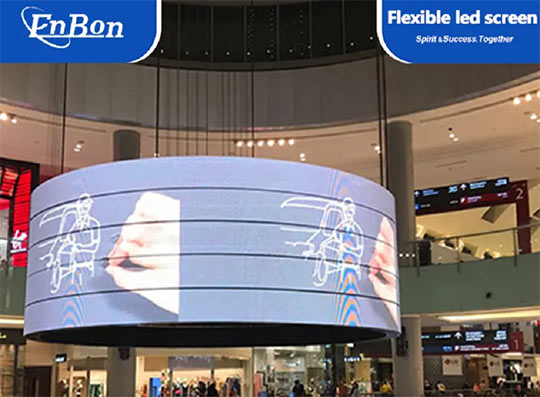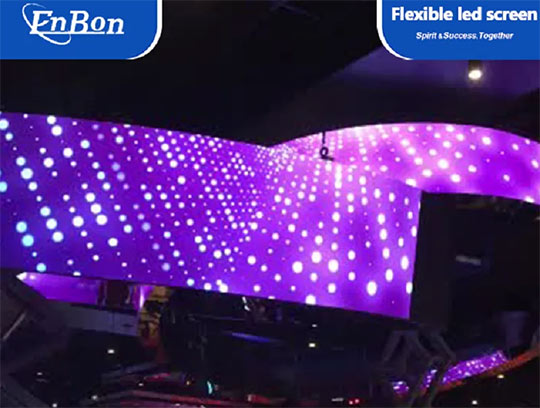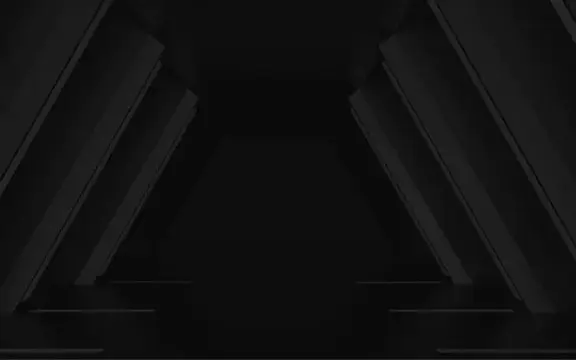
A flexible LED screen is a lightweight signage system primarily used for retail and advertising graphics. As the name implies, flexible LED screens are designed with flexible components and can be bent or bowled in nearly any direction. This gives users additional freedom to create new designs and lay out their content creatively in eye-catching ways. In addition to adding visual interest and drawing consumers' attention, flexible LED screens boast several other notable benefits. Their low power consumption relative to traditional lighting systems translates into lower operating costs. At the same time, their extreme durability makes them resistant to harsh outdoor elements and extends their lifespan significantly compared to other types of TV displays.
Furthermore, the superior quality of flexible LED screens ensures an incredibly sharp image resolution no matter how far away the viewer may be standing. All these factors make flexible LED screens one of the most cost-effective solutions for retail businesses and marketing agencies looking to capture customer attention in obvious locations.

Detailed Overview of Flexible LED Screen Working
Flexible LED screens are the latest in modern display technology. They are flexible, lightweight, and easy to install. The flexible nature of these screens allows them to be bent into different shapes and used vertically and horizontally. To operate a flexible LED screen, you must first connect it to a power source using AC or DC adapter cables. This will enable the flexible LED screen to retain heat by reducing loading from the backlight reflected from adjacent displays. Then you will pair the flexible LED screen with an HD display receiver to receive video feed inputs from your respective sources allowing you to view your content directly onto the flexible display surface. After that, the flexible LED screen can be mounted or suspended in whatever configuration best suits your display needs creating impressive visuals for audiences.
Basics of Flexible LED Screen Working: LEDs, Circuits, and Processors
Flexible LED screens are quickly taking over the digital display market due to their remarkable versatility and reliable performance. These screens are constructed from flexible substrate material with small, ultra-bright LEDs embedded inside. Each LED is connected to a circuit that processes electrical signals and sends them to processors that regulate the light emitted by the LEDs. This process creates vibrant visuals for audiences of any size. It can adapt to curved and flexible surfaces, allowing vivid displays on uneven or curved walls, ceilings, displays, or even flexible floors. With flexible LED screen technology advancing faster than ever, we are certain to see advanced visual applications in an array of environments.
Types of Interconnects Used in Flexible LED Screens
Flexible LED screens have become increasingly popular for their dynamic visual impact and for the fact that they are space-saving. However, flexible LED screens rely on various interconnects like most complex electronics. This can include RJ45 Ethernet cables, CAT6 Ethernet cables, RCA cables, 3.5mm audio cords, and HDMI cords. Interconnects transmit audio and visuals appropriately within the flexible LED screen structure. In addition to the aforementioned interconnects, flexible LED screens are sometimes connected via controller cards or controllers, which generally come included with a flexible LED screen panel. Different interconnections may be recommended for optimum performance levels depending on the size or type of flexible LED panel purchased.
Software Considerations for Driving a Flexible LED Screen
For driving a flexible LED screen, it is essential to choose the right software. A comprehensive set of features is needed to match the high performance of LED technology and the flexible nature of LED screens. Programmers must understand how to use dynamic audio features and flexible video synchronization for content delivery on flexible LED screens. Furthermore, advanced networking, automation, and scripting functionality will be needed to manage and control flexible LED screens. Therefore, when selecting the software for a flexible LED screen, care should be taken to ensure that these expressive possibilities are taken advantage of.
How to Mount, Hang, and Connect the Panels in a Flexible Setup For Flexible LED Screen?
Installing flexible LED screens offers a great deal of flexibility when constructing your display, allowing you to arrange the panels in various configurations. But this setup requires specific steps to mount, hang, and connect the individual panels. It is essential to operate in an organized fashion for a successful final product. First, choose flexible mounting points that provide stability with minimal drilling; these can be reused multiple times as flexible setups may have to be rearranged or changed. After mounting the flexible mounts, hang the flexible LED screen on them using either suspension cables or wall mounts, depending on how you want to suspend the screen. Lastly, all flexible panels will need wiring to connect them to display images while syncing power and signal sources when needed accurately. With careful installation via these easy steps, you can enjoy flexible LED screens that provide remarkable visual experiences for you and your audience!
Examples of Creative Uses for Flexible LED Screens
Flexible LED screens can be an effective way to add something special to a variety of spaces. For example, flexible LED panels are often used in places like bars and nightclubs to create visually stunning backdrops or even artwork that shifts and changes with the music. Additionally, flexible LED screens can enhance the viewing experience at concerts, enabling performers to show interactive visuals during their performances. They can also be installed in public spaces such as shopping malls, amusement parks, and art galleries - for display media content or interactive elements designed to engage visitors. Furthermore, flexible LED screens have been employed in window displays for extra marketing effectiveness and customized stages that feature flexible LED panels in churches and conferences. With these creative applications only the tip of the iceberg, flexible LED screens truly display their usefulness in any space.
Common Troubleshooting Tips and Maintenance Guidelines for Flexible LED Screen
Regular maintenance and troubleshooting can go a long way in the life of flexible LED screens. To prevent unforeseen damage, flexible LED screen owners should regularly clean off dust and debris accumulated over time to maintain optimal performance. Additionally, flexible LED screens should be kept away from strong magnetic fields to avoid interference that could cause flickering or ruptured wires. Owners should also make sure to power cycle their flexible LED screens every six months. This will reset the system and ensure that no performance issues occur due to software conflicts or glitches. If problems arise, troubleshooting should follow manufacturer guidelines; if issues cannot be resolved alone, professional assistance is recommended.
Final Words
Flexible LED screens have quickly become the go-to choice for displaying eye-catching and engaging content for any event or venue. Their advantages of low power consumption, durability, flexible design, a wide range of colors, and enhanced connectivity make them ideal for various settings. Whether in a concert or product promotion, flexible LED screens will ensure that your display stands out among the crowd. Investing in flexible LED screens is undoubtedly worth it if you’re looking for an attention-grabbing display solution that will leave a lasting impression.
Enbon has established itself as a leader in LED technology, offering some of the highest-quality LED screens in the global market. Their products boast state-of-the-art features, including Ultra HD resolution and adjustable brightness control, making them ideal for indoor and outdoor use. They also provide professional installation services to ensure customers get the best performance from their LED screens. Additionally, Enbon offers ongoing support and maintenance plans that make sure their screen systems run smoothly for years after purchase. Enbon is dedicated to providing its customers with top-tier service, making it an excellent option for anyone looking to invest in LED technology.


